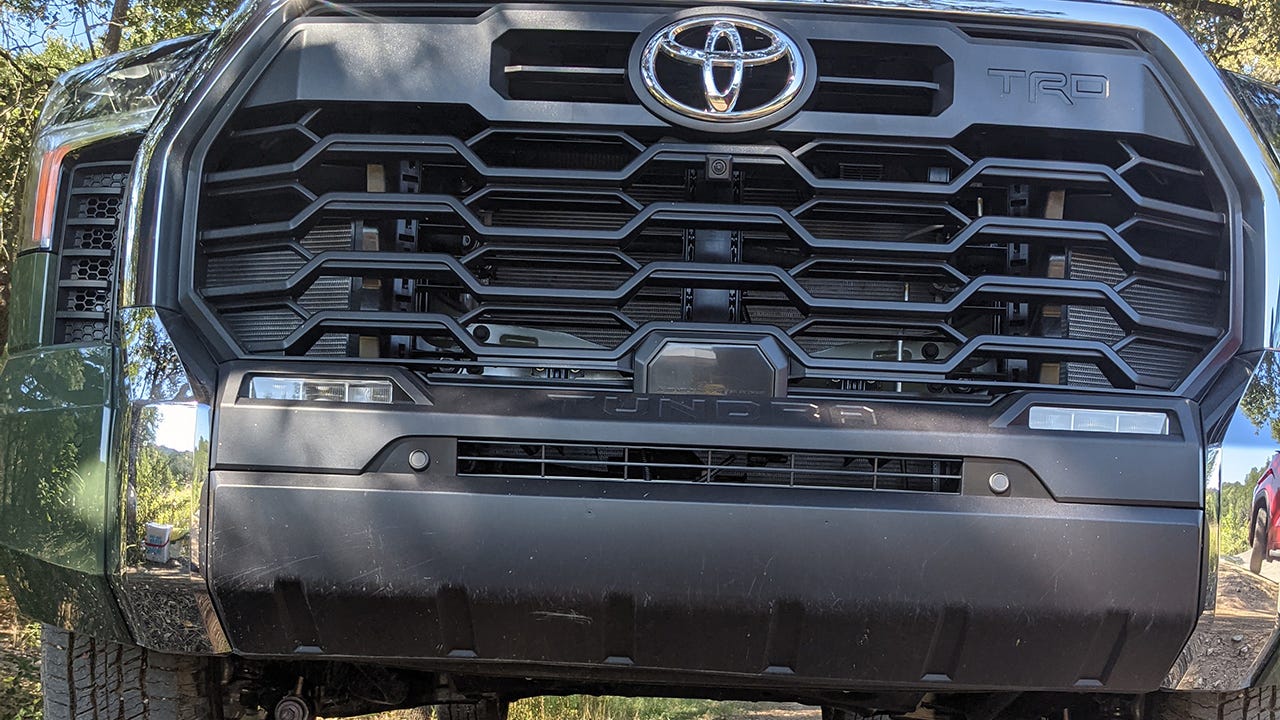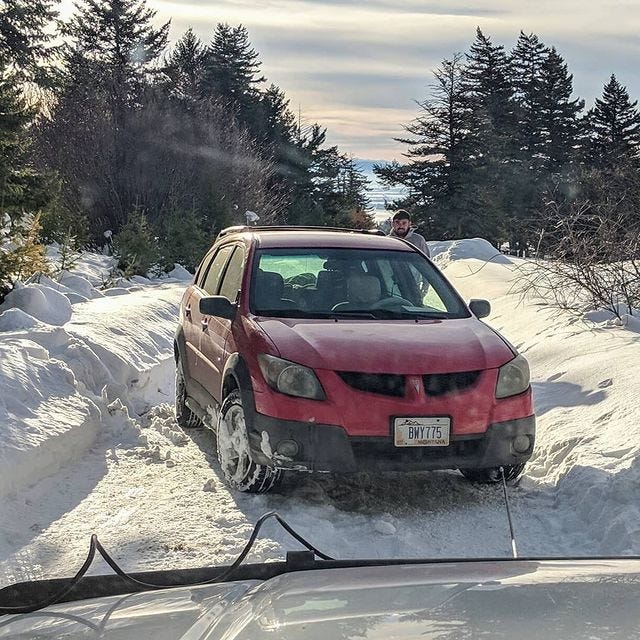Everything You Need To Know About The New Tundra, From One Missing Part
Vol.12
You can read my full, sanitized thoughts about the new Tundra on Outside, and Outdoor Life. But I think I can maybe sum up the whole truck with a very brief description of a single part. It’s not a part you’ll find on a Tundra, no matter how big its TRD Pro badges might be. And not even one you’ll find in the official Toyota accessories catalog, which, at the launch, the company was very excited to note includes “a three inch lift kit.”
That part is a front recovery point.
Recovery is the act of getting a stuck vehicle, unstuck. As such, it’s a wide ranging term that can include anything from shoving your floor mats under your back wheels, to paying $5,000 for a deuce-and-a-half to drive 5 miles down a fire road to drag your Prius back to pavement.
More commonly, recovery involves pulling on something. That something you pull on is a recovery point. Without a proper thing to pull on, you are, at best, risking life, limb, and the ability to keep your brand new pickup truck in a single piece. At worst, pulling on an improper thing, with tens of thousands of pounds of force, will fucking kill you.
It doesn’t matter if you’re using one truck to pull another out with a recovery strap, or if you’re using a winch to pull yourself out via a helpful tree. You will need a proper, strength rated recovery point in order to achieve that.
(Adding talk of winch complicates this discussion because you’ll likely need at least an aftermarket bumper to fit one, and that will presumably be properly equipped. But, if you wanted to run a hidden winch, and a pulley, you’d still be up shit creek without an aftermarket recovery point. I’m acknowledging this, since the Internet exists for the express purpose of making pedantic arguments.)
Adding a proper recovery point to the back of a a truck is easy, so long as you have a hitch receiver. You don’t even need one of those fancy anodized aluminum inserts, just stick your hitch pin through the hole, through one end of a recovery strap, and you’re good to go.
Up front, things get a little more difficult. I’ve successfully winched out two vehicles that weren’t fitted with points. The first was a Pontiac Vibe driven by an MMA fighter who’d been punched in the head a few too many times. Before I did it, I explained that there was a good chance I’d rip his front suspension off, and made him agree not to hold me liable if that happened. The second was a solid axle food truck high centered on a curb. On that one, I just threw a tree strap around the axle, and pulled it all of six inches to freedom, thus earning myself free bratwurst for life.
You’ll note that, in both of those cases, I used a winch. And I used that to carefully apply as little force as possible, as slowly as possible. I would not have performed a kinetic recovery under these circumstances.
Front recovery points mount to the frame rails, and are purpose built to handle momentary loads that can exceed three times the vehicle’s gross weight. Think about how much force you might apply dragging one 5,000 pound truck that's stuck in deep mud out with another 5,000 pound truck. In a split second timeframe, that could involve an enormous amount of force. Using inadequate or inappropriate equipment can easily turn shackles, entire bumpers, or tow balls into lethal projectiles.
And you don’t need to be shredding the gnar in order to encounter conditions that might leave you stranded. We had a widely forecast winter storm this week here in Montana, but a buddy still sent me a picture of his Highlander stranded in a drift. That MMA fighter? He just backed off the side of a snowy road. The food truck was stuck on a curb. I’ve gotten stuck on the sandy shoulder of a highway in Nevada.
Any time you travel through winter weather, any time you travel through remote areas, and any time you go off-road, you should prepare for getting stuck by carrying the equipment necessary to get unstuck. Consider that statement in reverse: If you aren’t prepared, or aren’t able to prepare to get unstuck, you shouldn’t travel through winter weather, remote areas, or go off-road.
Sure, the aftermarket is going to have front recovery points available for the new Tundra, probably by the time I’ve finished this newsletter. But, by failing to include them from the factory, Toyota has failed to endow its latest, greatest 4x4 with the ability to be recovered in stock form. It has failed to give the new Tundra the ability to adequately handle winter weather, remote travel, and to go off-road.
And, if everyone’s favorite truck company has made that big of an oversight on arguably its most important truck, then what other corners have they cut?
As I asked when I notably noted that the Tundra’s payload falls behind the mid-size Ford Ranger: Where’s the beef?





Great informative read, tell ya what, me just being honest this doesn’t surprise me as when I saw the 300 series and to my sad crying eyes they removed the fold down rear tailgate. I was about to sell my 100 series right there! Why would Toyota mess with something like that? Geesh!
even my Miata has those ...